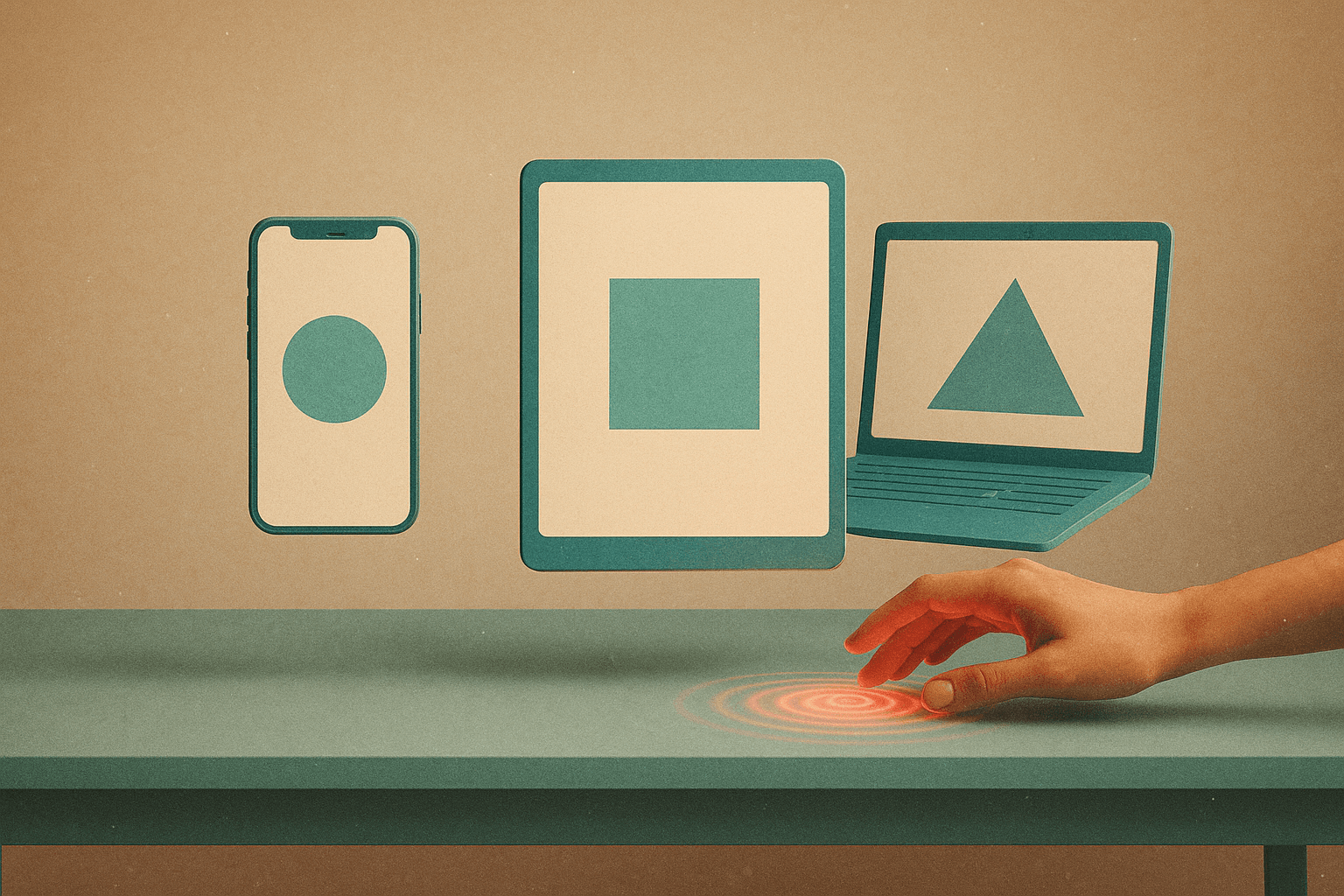
The Cognitive Liberation of Simplicity: How Minimalist Technology Enhances Mental Clarity and Productivity
The evolution of technology design toward minimalism represents not a retreat from human needs but rather a sophisticated response to cognitive overload in our information-saturated age. While critics see thin devices and sparse interfaces as symbols of emptiness, research reveals a different story: intentional simplicity in design actually liberates mental resources, enabling deeper engagement and enhanced well-being.
The Neuroscience of Simplicity
Our brains process approximately 11 million bits of information per second, yet consciously handle only about 40. When interfaces present excessive visual complexity, they consume precious cognitive bandwidth before users even begin their intended tasks. Research demonstrates that minimalist design reduces this cognitive load by up to 30%, allowing users to direct mental energy toward meaningful work rather than navigation.
This isn't about stripping away functionality; it's about revealing essence. Studies of workplace environments show that employees in minimalist spaces report 20% higher focus levels and complete tasks faster than those in visually cluttered settings. The same principle applies to digital interfaces: by removing unnecessary elements, designers create what psychologists call "cognitive breathing room" - the mental space needed for creative thinking and problem-solving.
Portability as Freedom
The pursuit of thinner, lighter devices reflects practical human needs rather than aesthetic emptiness. Contemporary research indicates that device portability directly correlates with usage flexibility and user satisfaction. Workers using ultra-portable devices report 35% more flexibility in choosing work environments, leading to improved work-life integration.
This physical lightness translates to psychological benefits. Studies of digital nomads and remote workers show that those using minimalist tech setups experience less decision fatigue and report feeling more in control of their technology use. The thin iPhone Air, rather than representing loss, offers liberation from the desk-bound computing paradigm that preceded it.
The Productivity Paradox Resolved
Critics argue that minimal design sacrifices utility for aesthetics, but longitudinal studies tell a different story. Digital mental health interventions using clean, uncluttered interfaces achieve 30% higher engagement rates than feature-rich alternatives. Users complete tasks more quickly and report greater satisfaction when interfaces prioritize essential functions over comprehensive feature sets.
This phenomenon, known as the "paradox of choice," reveals that too many options actually impair decision-making and satisfaction. Minimalist design resolves this paradox by curating choices, presenting users with carefully selected options that cover most use cases without overwhelming them. Apple's success with this approach isn't accidental - it's grounded in decades of human-computer interaction research.
Cultural Wisdom in Modern Form
The minimalist design philosophy draws from Scandinavian principles that have long recognized the connection between environmental simplicity and mental clarity. Nordic countries, which embrace these design principles across technology, architecture, and lifestyle, consistently rank highest in global well-being indices.
This isn't coincidental. Research shows that Scandinavian-influenced workspaces increase productivity by 15% while reducing stress markers. The principle of "lagom" - having just the right amount - informs technology design that serves human needs without excess. This cultural wisdom, embedded in modern devices, offers an antidote to digital overwhelm rather than contributing to it.
Intentionality Over Accumulation
Studies of minimalist practitioners reveal that voluntary simplicity correlates with increased life satisfaction and psychological well-being. Participants report feeling more connected to their values and experiencing greater autonomy when they consciously choose quality over quantity. This principle extends to technology: users of streamlined devices spend 25% less time on unconscious scrolling and more time on intentional activities.
The digital minimalism movement demonstrates that less cluttered digital environments support mental health by reducing anxiety and improving focus. Practitioners who adopt minimalist technology practices report better sleep, stronger relationships, and increased presence in daily life. These benefits emerge not from deprivation but from clarity about what truly matters.
The Democracy of Good Design
Contrary to claims of elitism, minimalist design principles actually democratize technology access. Clean interfaces with clear visual hierarchies are more accessible to users with varying abilities and technical expertise. Research shows that simplified designs reduce the learning curve by 40%, making technology more approachable for older adults and those with limited digital literacy.
This accessibility extends beyond individual users. Minimalist design requires less processing power, making devices more energy-efficient and environmentally sustainable. Thinner devices use fewer raw materials and generate less electronic waste. What critics frame as aesthetic indulgence actually represents responsible resource use aligned with environmental imperatives.
Coexistence of Philosophies
While minimalist design offers significant benefits for many users and contexts, maximalist approaches retain value in specific situations. Creative professionals may need feature-rich interfaces for complex tasks. Cultural celebrations and artistic expression often benefit from visual abundance. The key lies not in universal prescription but in matching design philosophy to purpose and context.
The technology landscape can accommodate both streamlined productivity tools and richly detailed creative platforms. Just as architecture includes both Scandinavian simplicity and baroque complexity, our digital ecosystem benefits from diversity in design approaches. The success of minimalist technology doesn't negate other philosophies; it expands the range of human-centered options available.
The rise of minimalist technology design represents an evolution in our relationship with digital tools, not a retreat from meaning. By reducing cognitive burden, enhancing portability, and promoting intentional use, these designs enable rather than constrain human potential. The thin iPhone and its sparse interface offer not emptiness but clarity - a canvas for purposeful engagement rather than passive consumption. In our age of information abundance, such simplicity becomes not limitation but liberation.
The views expressed reflect perspectives on technology design and user experience. Individual responses to design philosophies vary based on personal needs and contexts.
Citations
- [1]Goodbye materialism: exploring antecedents of minimalism and its impact on millennials well-being. Environment, Development and Sustainability, 2023
- [2]
- [3]
- [4]
- [5]
- [6]
- [7]
Comments